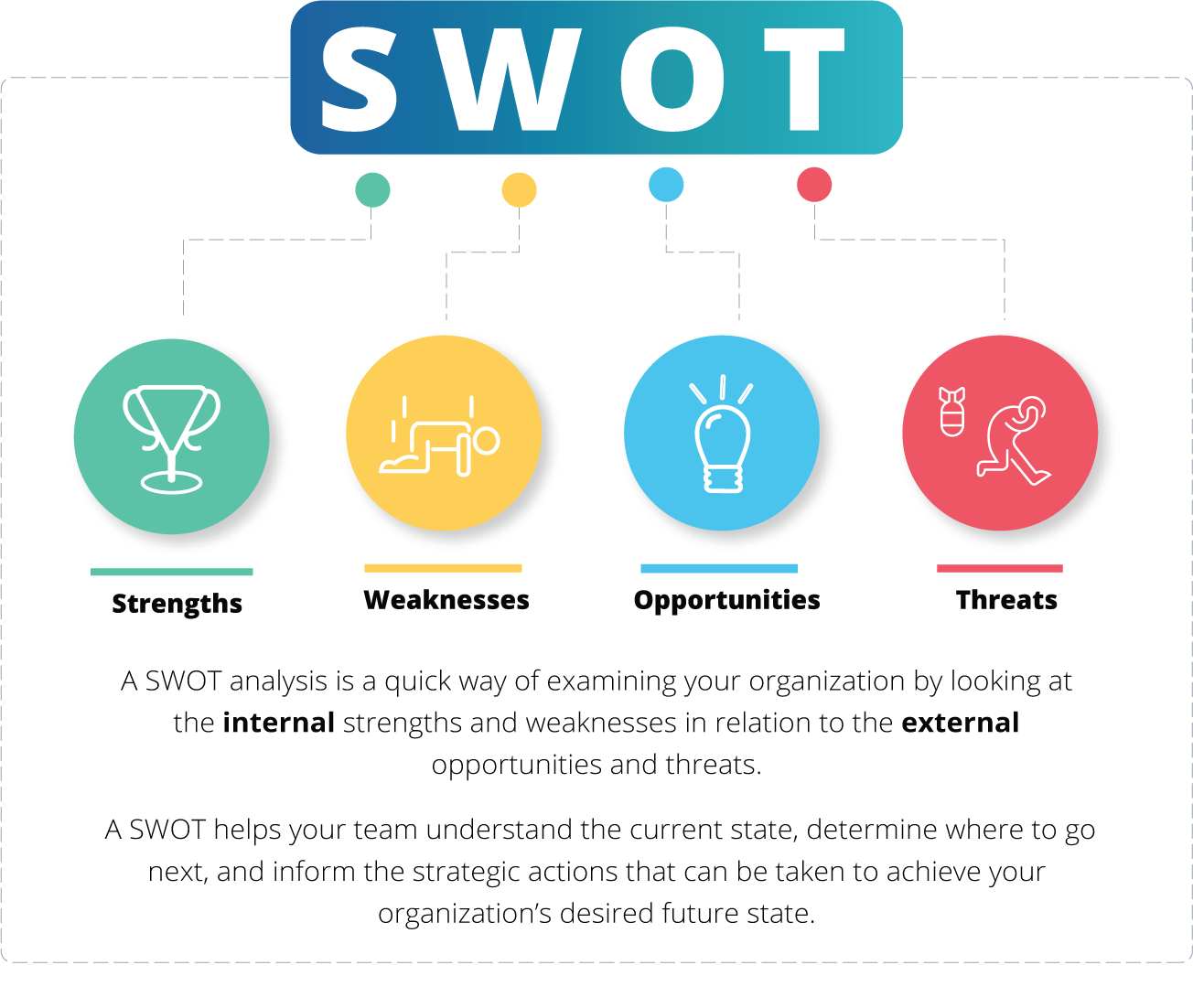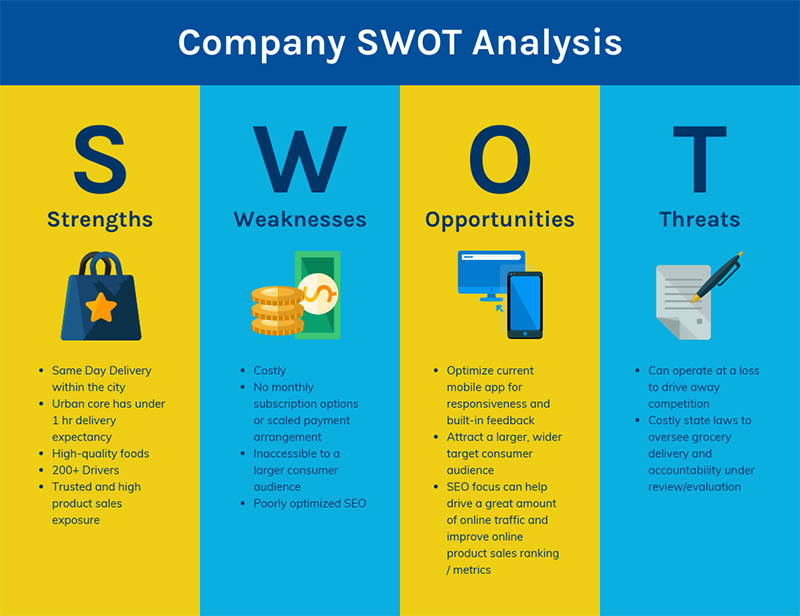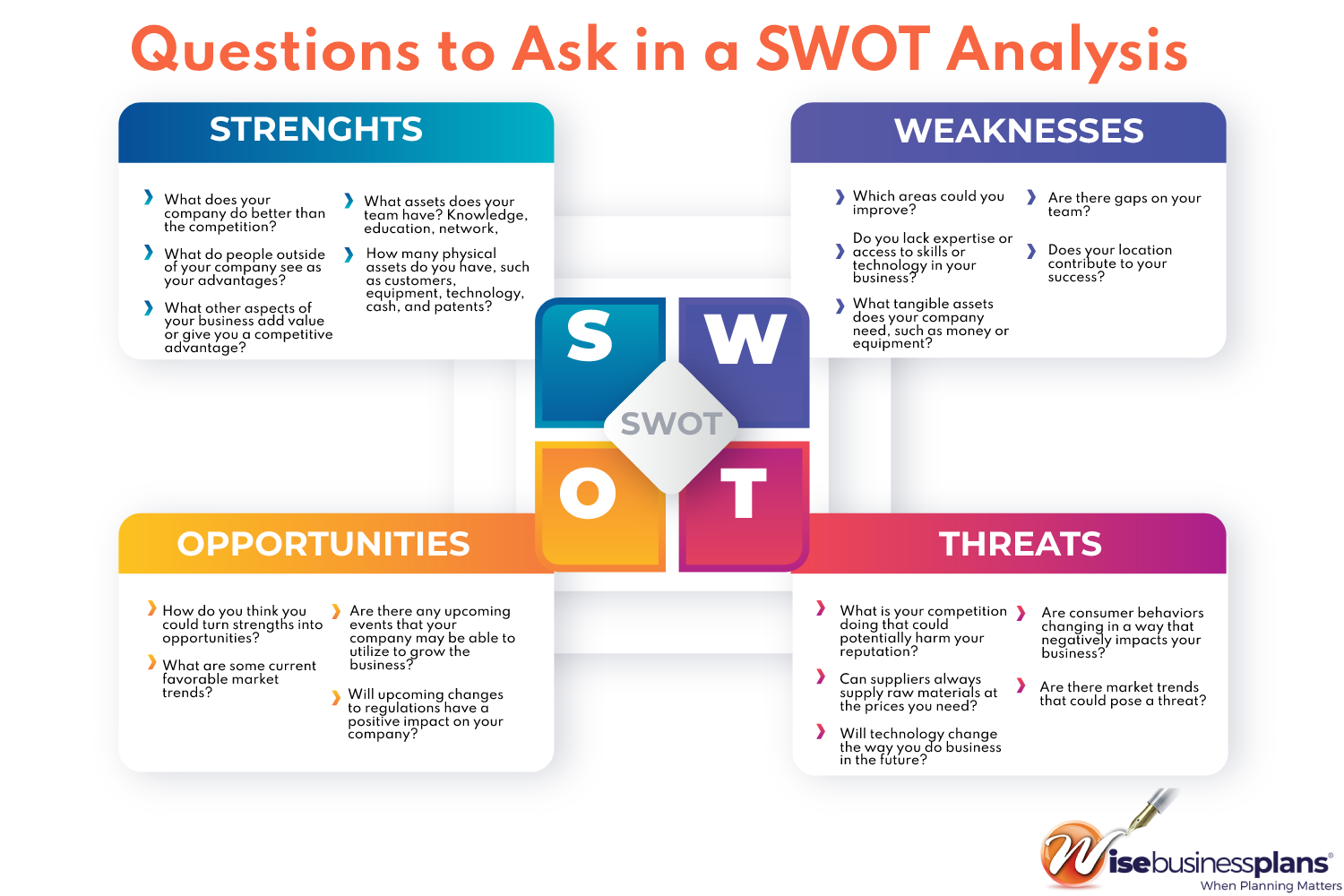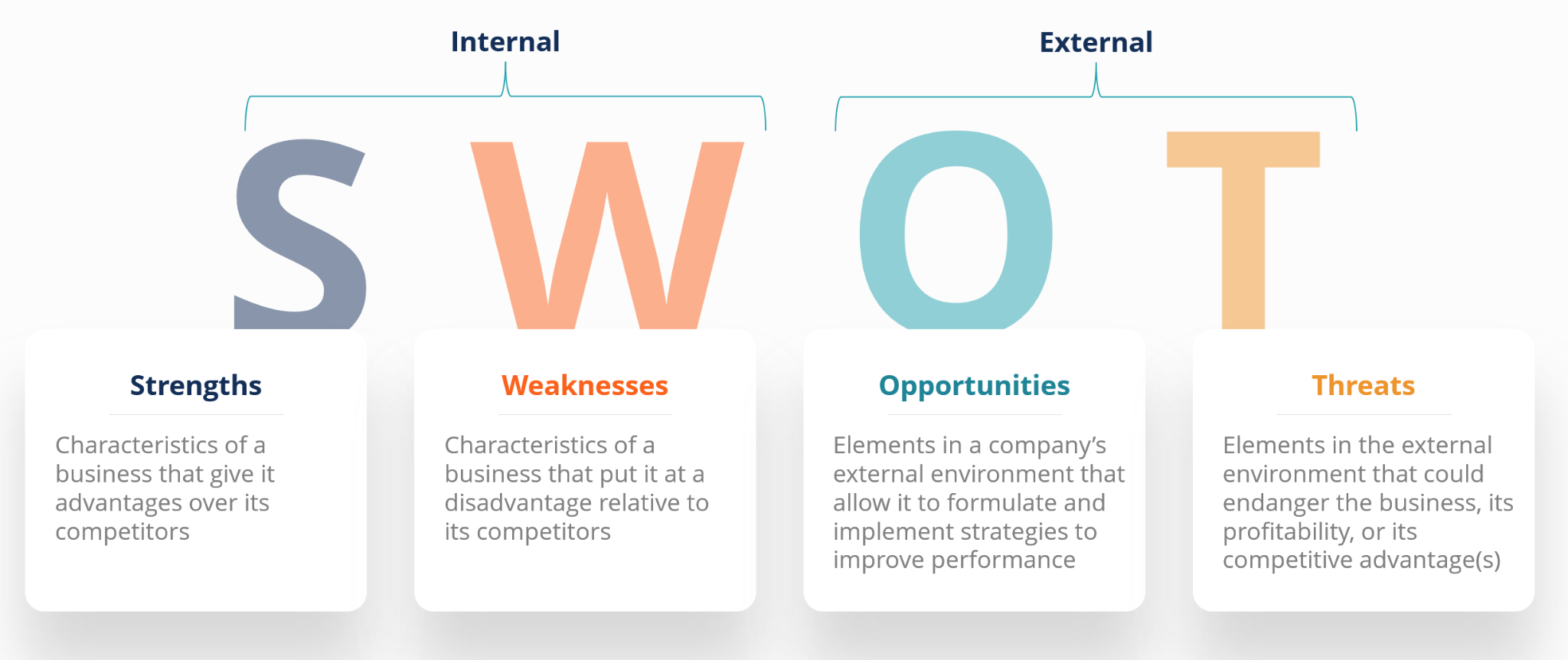How To Perform Swot Analysis Of A Company

In today's fiercely competitive business landscape, understanding your company's position is paramount. Navigating market complexities requires a clear, concise assessment of internal strengths and weaknesses, coupled with a keen eye on external opportunities and threats. Mastering the SWOT analysis empowers businesses to chart a strategic course towards sustainable growth and resilience.
This article provides a comprehensive guide on how to conduct a thorough SWOT analysis for your company. It will detail the steps involved in identifying and evaluating each component: Strengths, Weaknesses, Opportunities, and Threats. Using this framework allows businesses to gain valuable insights, inform strategic decision-making, and proactively mitigate potential risks.
Understanding the SWOT Matrix
The SWOT analysis is visually represented as a 2x2 matrix. Each quadrant focuses on a specific area of assessment.
- Strengths: Internal attributes and resources that give your company an advantage.
- Weaknesses: Internal limitations or shortcomings that hinder performance.
- Opportunities: External factors that could positively impact your company.
- Threats: External factors that could negatively impact your company.
Step-by-Step Guide to Performing a SWOT Analysis
1. Identifying Your Strengths
Start by brainstorming the internal factors that give your company a competitive edge. Consider what your company does exceptionally well. These should be aspects that distinguish you from competitors.
Examples of strengths include a strong brand reputation, patented technology, or a highly skilled workforce. Other strengths may involve efficient operational processes, innovative products or services, or a loyal customer base. Documenting these is crucial for leveraging them effectively.
2. Recognizing Your Weaknesses
Next, identify the internal factors that put your company at a disadvantage. Be honest and critical in this assessment.
Weaknesses may include outdated technology, a lack of skilled employees, inefficient supply chains, or financial constraints. Acknowledging these weaknesses allows you to develop strategies for improvement.
3. Exploring Opportunities
Focus now shifts to the external environment. Identify potential opportunities that your company could capitalize on.
Opportunities can arise from changing market trends, technological advancements, regulatory changes, or unmet customer needs. Consider expanding into new markets, developing new products or services, or forming strategic partnerships.
4. Analyzing Threats
Finally, identify the external factors that could pose a risk to your company. This is to understand how these factors can impact your business.
Threats might include increased competition, economic downturns, changing consumer preferences, or disruptive technologies. Understanding these threats enables you to develop contingency plans and mitigation strategies.
Using the SWOT Analysis for Strategic Planning
Once you have completed the SWOT matrix, the next step is to translate these insights into actionable strategies. Look for patterns and relationships between the four elements.
For example, can you leverage your strengths to capitalize on opportunities? Can you use your strengths to mitigate threats? Can you address your weaknesses to take advantage of opportunities? Or, can you minimize your weaknesses to avoid threats?
This process often involves prioritizing strategies based on their potential impact and feasibility. Consider using a TOWS matrix (Threats, Opportunities, Weaknesses, Strengths) to further refine your strategic options.
Example of SWOT Analysis in Action
Consider a hypothetical company, "Tech Solutions Inc.", a small software development firm. A SWOT analysis may reveal the following:
Strengths: Highly skilled development team, innovative product offerings, strong customer relationships.
Weaknesses: Limited marketing budget, lack of brand awareness, reliance on a few key clients.
Opportunities: Growing demand for cloud-based solutions, increasing adoption of mobile technologies, potential partnerships with larger companies.
Threats: Intense competition from established players, rapid technological advancements, potential security breaches.
Based on this SWOT analysis, Tech Solutions Inc. could focus on leveraging its skilled team to develop innovative cloud-based solutions (Strengths-Opportunities). It might also explore strategic partnerships to increase brand awareness and expand its customer base (Opportunities-Weaknesses).
Beyond the Basics: Advanced SWOT Analysis Techniques
While a basic SWOT analysis provides a valuable framework, consider using more advanced techniques for a deeper dive. This will enable a more comprehensive result.
This includes assigning weights to each factor based on its importance, or conducting a competitive SWOT analysis to compare your company's position to that of its rivals.
"The value of a SWOT analysis lies not just in identifying the elements, but in using them to inform strategic choices," says Dr. Anya Sharma, a leading business strategist.
Conclusion
Performing a comprehensive SWOT analysis is an essential exercise for any company seeking to understand its current position and chart a strategic path forward. This information is vital to future planning and strategy.
By carefully identifying and evaluating strengths, weaknesses, opportunities, and threats, businesses can gain valuable insights that inform decision-making, mitigate risks, and capitalize on growth opportunities. Embracing the SWOT analysis as a continuous process will enable companies to adapt to the ever-changing business environment and achieve sustainable success.




![How To Perform Swot Analysis Of A Company SWOT Analysis: How To Do One [With Template & Examples] - Amplitude](https://blog.hubspot.com/hs-fs/hubfs/swot-analysis-example.jpg?width=3000&height=2000&name=swot-analysis-example.jpg)
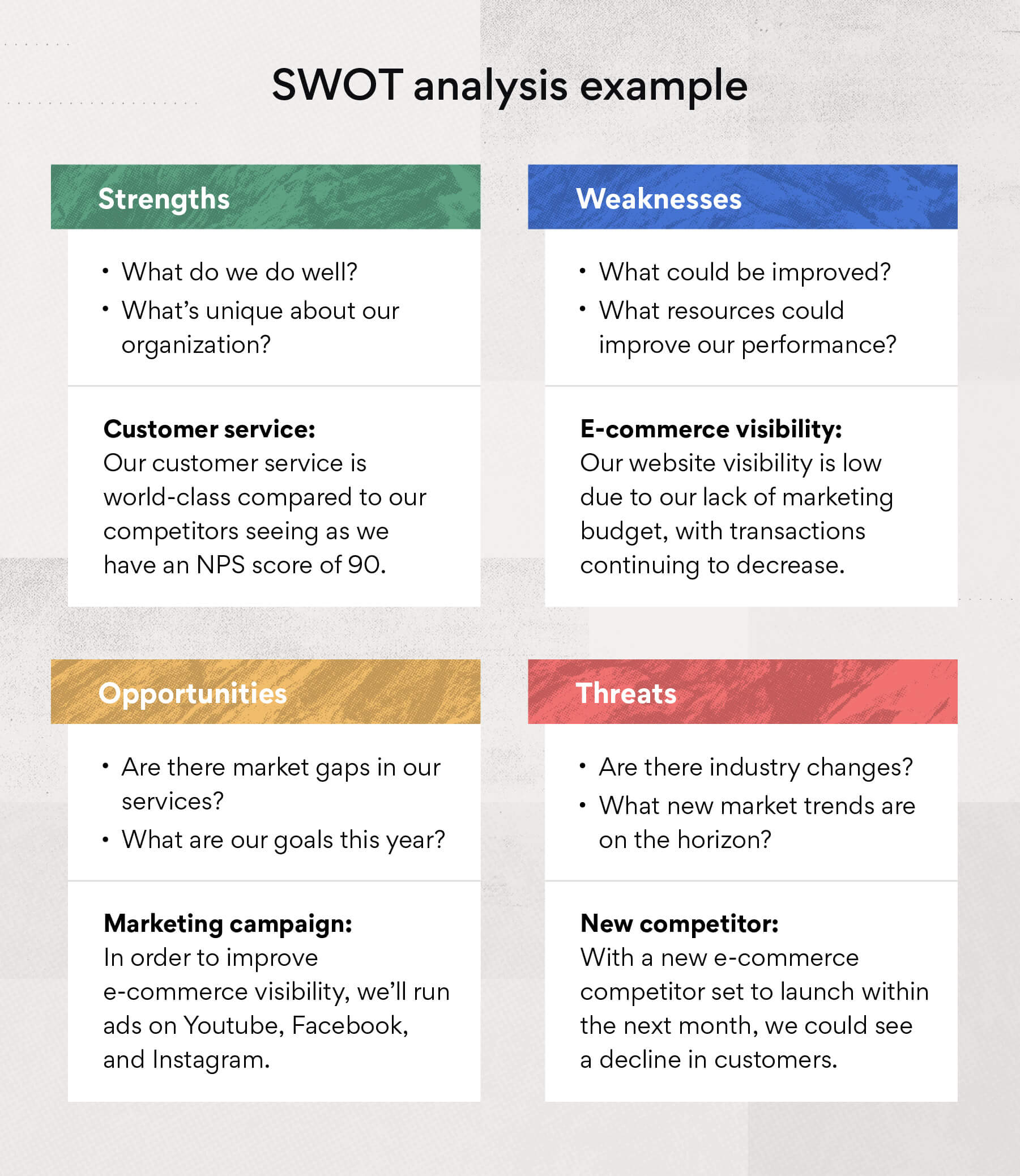
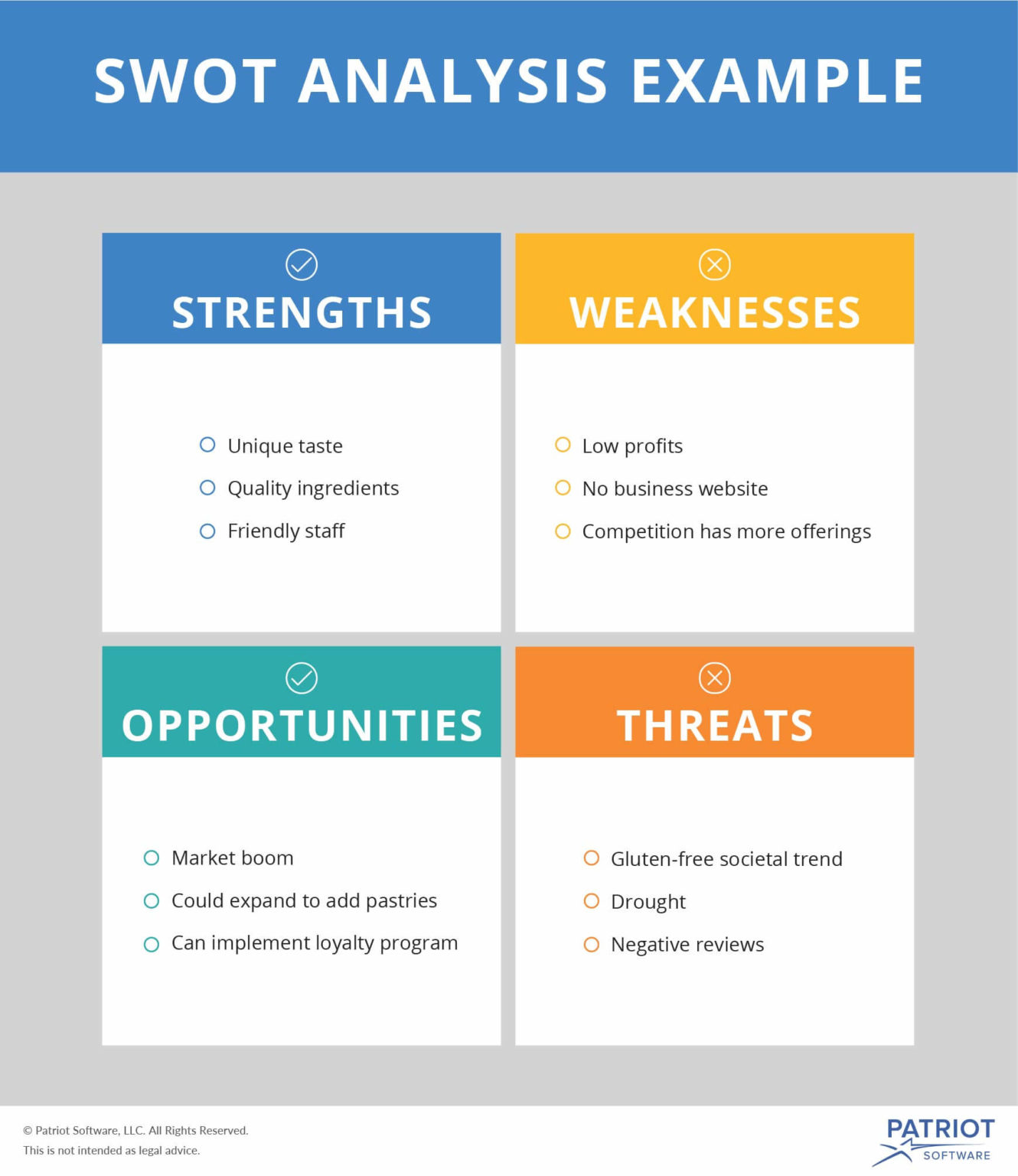
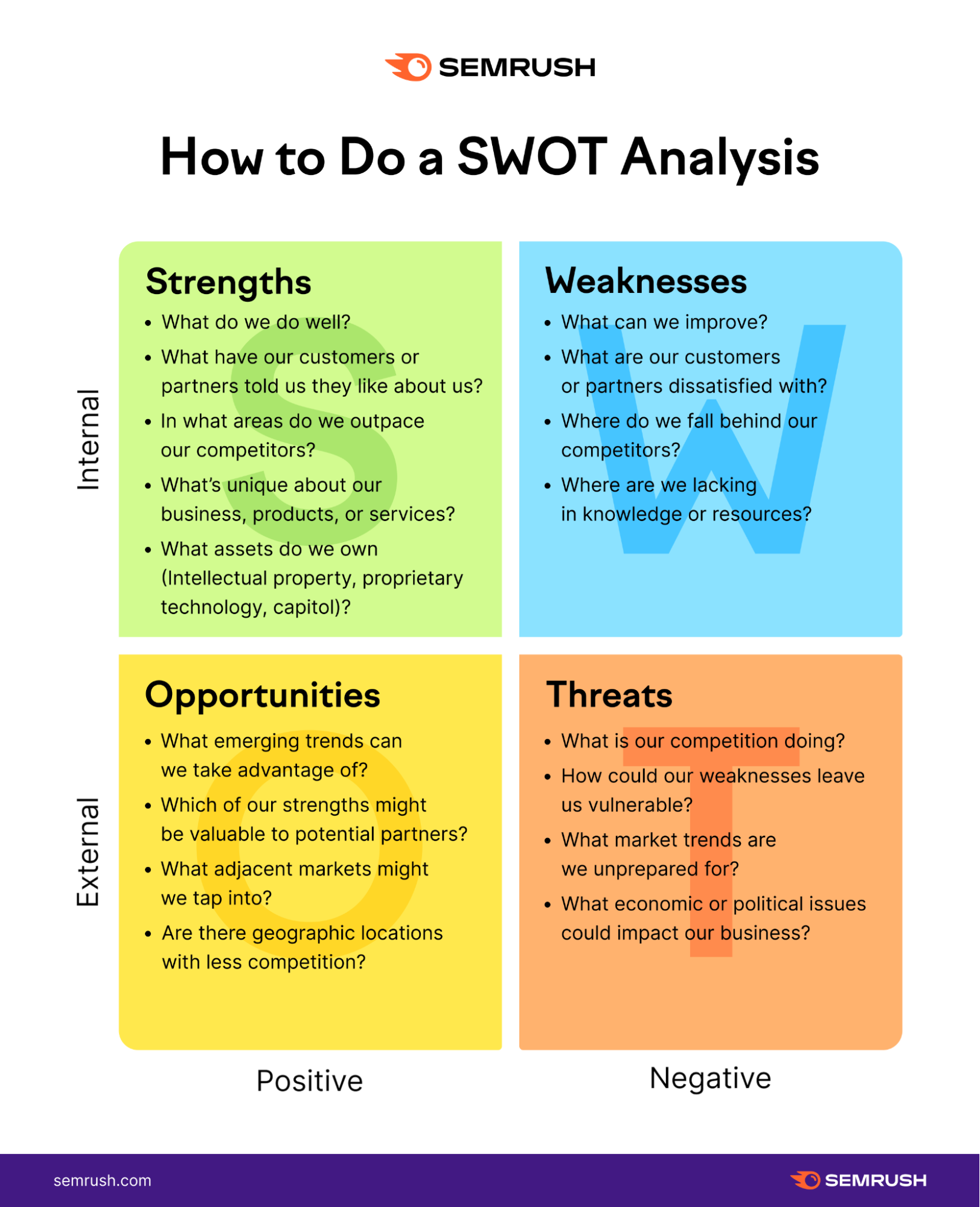
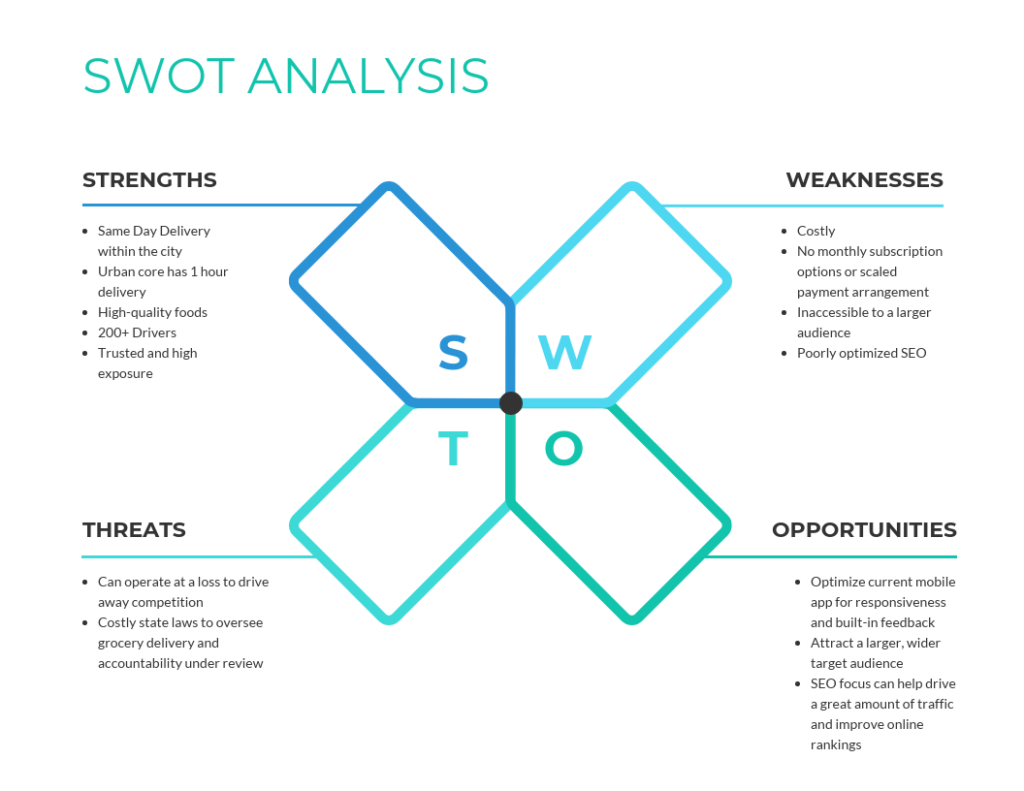

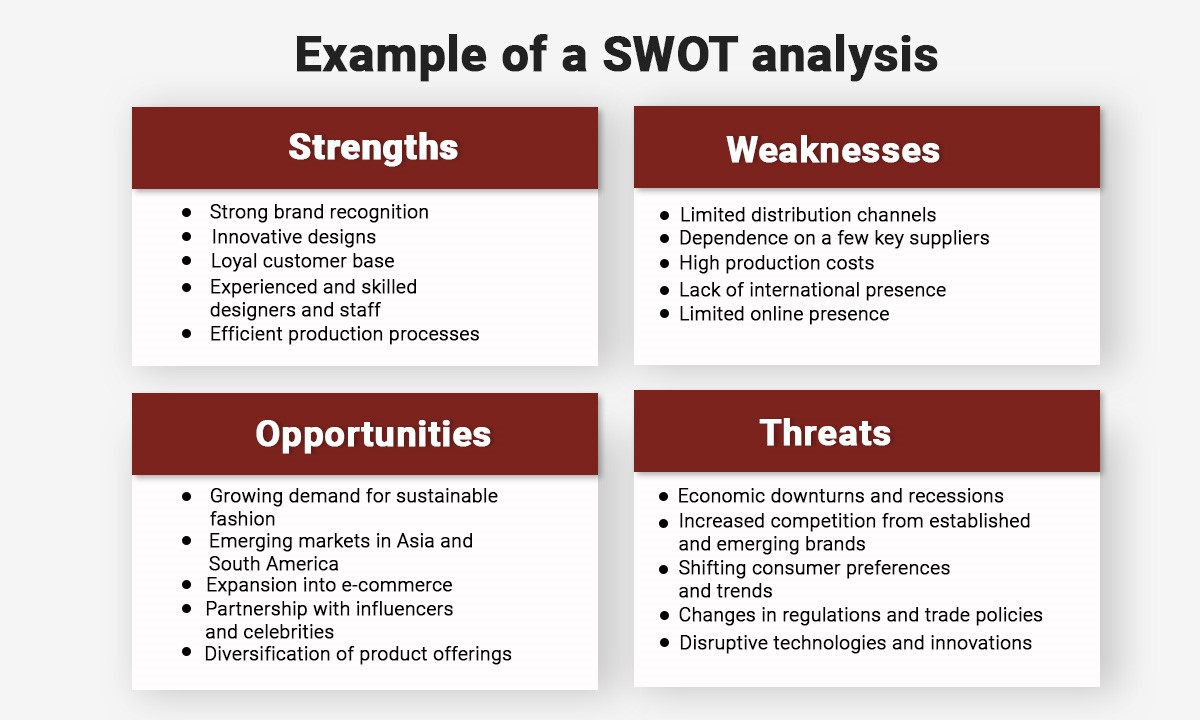
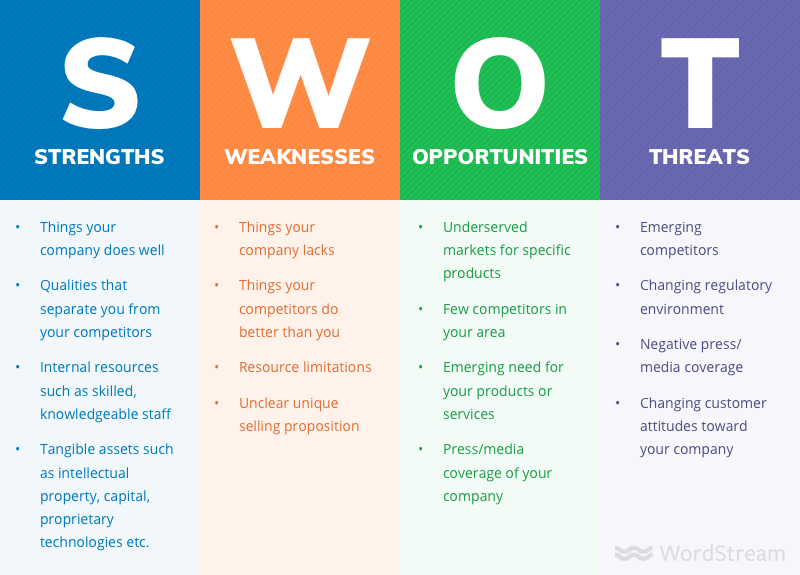
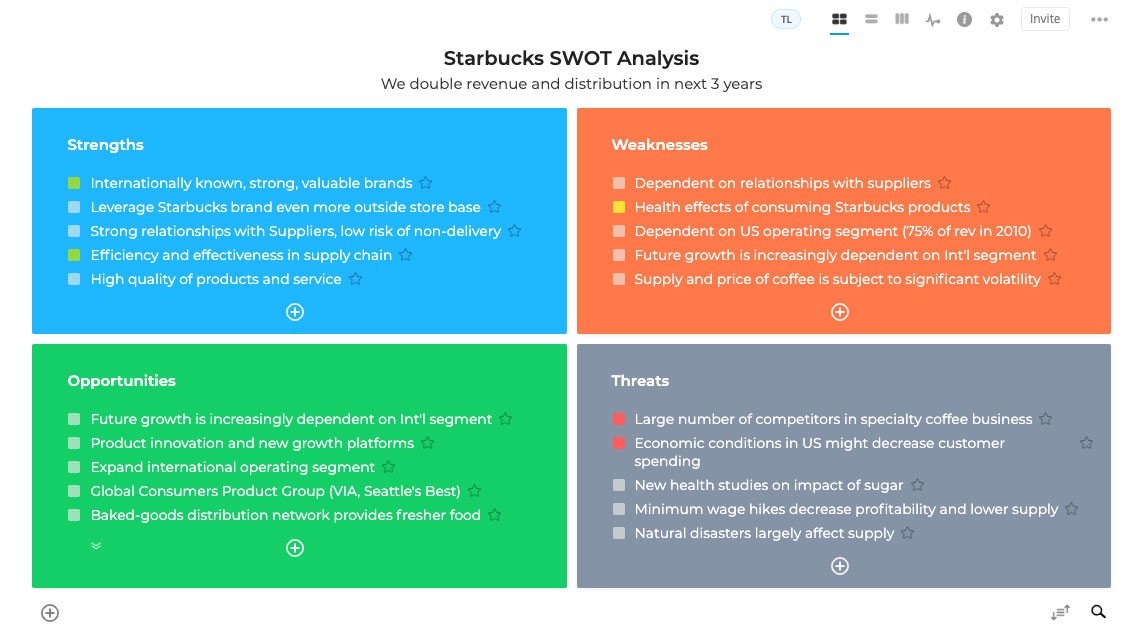
![How To Perform Swot Analysis Of A Company How to do a SWOT analysis [with examples & templates] — BiteSize Learning](https://images.squarespace-cdn.com/content/v1/6348398d9d21fd6277c64f96/485e7404-ef4b-40fb-8cf4-84f14580fe43/swot+analysis+matrix+diagram+templates.png)
